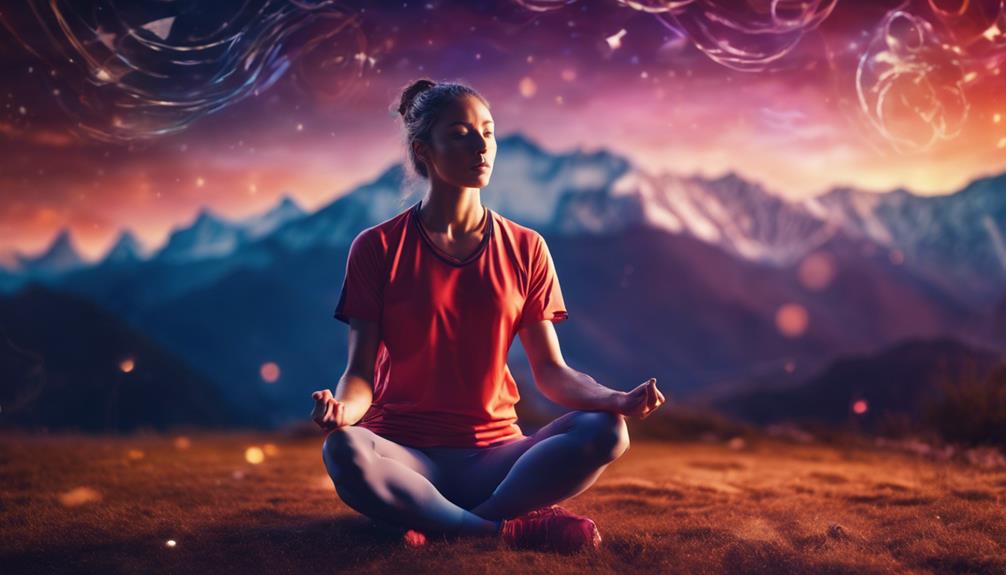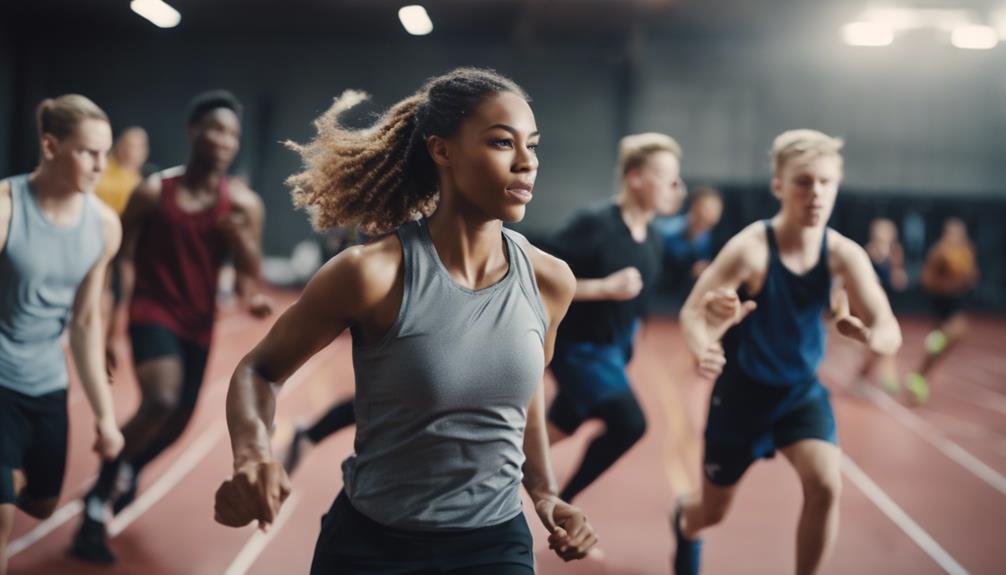
Sports photography captures the exhilarating moments of athletes in action, freezing feelings of adrenaline and competition within a single frame. To achieve this, having the right camera gear is crucial, but with so many options available, how do you know what’s best for your needs? This article will guide you through the essentials of sports photography gear, covering everything from key features to camera types, lenses, and budget options. Whether you’re a seasoned pro or just starting out, you’ll find valuable insights to help you choose the perfect camera for your sports photography adventures.
1. Understanding the Basics of Sports Photography Gear
When diving into sports photography, understanding the gear essentials is the first step. You’ll need a camera that can handle the fast-paced action, which often means looking for models that excel in shutter speed and autofocus capabilities. Sports photography also frequently takes place in challenging lighting conditions, from bright stadium lights to overcast skies, so a camera with good high ISO performance can be beneficial. Additionally, having a sturdy and reliable lens, along with accessories like stabilizers and external flashes, can enhance your shooting experience.Is Premium Sports Grading Legitcan i exercise after blood test
Your choice of gear will also depend on the type of sports you’re photographing. For instance, if you’re capturing the thrill of a football game, you’ll want a camera that can shoot quickly and efficiently in various conditions. Conversely, sports like swimming or gymnastics may require different focal lengths and settings. Knowing the specific requirements of your preferred sport will guide you toward the right gear choices.
2. Key Features to Look for in a Sports Camera
When searching for the best camera for sports photography, focus on several key features. First and foremost, you’ll want a camera with a high burst rate, allowing you to capture multiple frames per second (fps). This is crucial for freezing action, especially where timing is everything. Look for cameras that offer at least 10 fps or more, as they will allow you to catch those fleeting moments that define great sports photography.
Another important feature is the camera’s autofocus system. A reliable autofocus system with multiple focus points will help you track moving subjects more effectively. Look for cameras that offer continuous autofocus (AI Servo for Canon and AF-C for Nikon) to ensure your subject remains sharp, even when they’re in motion. Additionally, consider the camera’s build quality and ergonomics; a comfortable grip and weather-sealed body can make a significant difference when shooting for long periods or in challenging conditions.
3. DSLR vs. Mirrorless: Which Is Better for Action Shots?
Choosing between a DSLR and a mirrorless camera can be a daunting task, especially for sports photography. DSLRs have been the traditional choice for years, known for their robust build, extensive lens options, and proven autofocus technology. They generally offer faster shooting speeds and longer battery life, which can be advantageous while covering intense sporting events. However, they tend to be bulkier and heavier, which might be a drawback for some photographers.
On the other hand, mirrorless cameras have made significant strides in recent years, offering comparable autofocus speeds and burst rates while being lighter and more compact. This can be a game-changer for photographers who need to be agile while moving around the field or court. With advancements in technology, many mirrorless models now feature impressive low-light performance and real-time monitoring, giving them an edge in specific scenarios. Ultimately, the best choice often comes down to personal preference and shooting style.
4. The Importance of Fast Autofocus for Sports Shots
In sports photography, fast and accurate autofocus is an absolute necessity. Athletes move quickly, and having a camera that can keep up is essential for capturing those decisive moments. Slow autofocus can lead to missed shots, especially in high-speed sports like basketball or soccer. A camera with a sophisticated autofocus system will allow you to track subjects as they dart across the frame, ensuring that your images are sharp and well-timed.
When evaluating autofocus systems, pay attention to the number of focus points and the quality of those points. Cameras with phase-detection autofocus tend to excel in tracking fast-moving subjects. Additionally, look for features like face detection and tracking modes, which can be especially helpful in sports events where the player’s movements can be unpredictable. The right autofocus capabilities will ultimately elevate your sports photography, allowing you to capture stunning images consistently.
5. Best Lenses for Capturing Fast-Moving Athletes
Selecting the right lens is just as crucial as choosing the right camera when it comes to sports photography. Fast-moving athletes require lenses with fast aperture speeds, typically f/2.8 or lower, to capture crisp images in various lighting conditions. Telephoto lenses (such as 70-200mm or 300mm) are popular choices for sports photographers, as they allow you to zoom in on the action while maintaining a safe distance from the field or court.
Additionally, consider the versatility of your lens system. Zoom lenses provide the flexibility to adjust focal lengths on-the-fly, which is beneficial when the action moves quickly or when you need to capture both close-up and wider shots. Prime lenses, while less versatile, can offer superior image quality and speed, making them a great choice for indoor sports or low-light environments. Ultimately, your lens choice should align with the type of sports you’ll be shooting and the distance from which you plan to capture the action.
6. Top Budget Cameras for Aspiring Sports Photographers
If you’re just dipping your toes into sports photography, you don’t need to break the bank to get decent results. Many budget-friendly cameras offer impressive performance for action shots. Look for entry-level DSLRs or mirrorless cameras from reputable brands like Canon, Nikon, or Sony that feature good autofocus systems and decent burst rates. Models like the Canon EOS Rebel T8i or Nikon D3500 are great starting points for budding photographers.
Another excellent option to consider is the Sony Alpha a6000, a compact mirrorless camera with fast autofocus and a quick burst shooting mode, making it ideal for capturing action. While these budget cameras may lack some high-end features, they often provide enough performance to learn and grow your skills as you navigate the world of sports photography. As you gain experience and confidence, you can always upgrade to more advanced models down the line.
7. Mid-Range Options: Balancing Quality and Cost
As you progress in your sports photography journey, you might find yourself looking for mid-range cameras that offer a balance between quality and cost. These cameras typically boast enhanced features over budget models, making them suitable for more serious sports photography. Look for cameras such as the Canon EOS 90D or the Nikon Z6, which offer faster burst rates, better autofocus systems, and improved low-light performance.
In this price range, you’ll also find more lens options, allowing you to customize your setup according to the sports you shoot. A mid-range camera will not only elevate your image quality but also provide you with the versatility needed to capture a variety of sports and scenarios. As your skills improve and you gain more experience, these cameras can serve as reliable companions on your sports photography journey, enabling you to capture stunning images that truly reflect the excitement of the game.
8. High-End Cameras: For Serious Sports Enthusiasts
For those serious about sports photography, investing in a high-end camera is often the path to achieving professional-quality results. Cameras like the Canon EOS-1D X Mark III or the Nikon D6 are designed specifically for sports and wildlife photography, offering exceptional build quality, rapid burst rates, and state-of-the-art autofocus systems. These models excel in high-speed shooting and provide outstanding performance in challenging lighting conditions.
High-end cameras often come with extensive customization options, allowing you to fine-tune settings to suit your specific shooting style. Additionally, pairing these cameras with professional-grade lenses can help you achieve extraordinary image quality and precision. While the initial investment may be significant, the capabilities of these top-tier cameras can significantly enhance your sports photography skill set, allowing you to capture breathtaking images that tell a compelling story.
9. Pro Tips for Choosing the Right Camera Settings
Once you’ve selected your camera, understanding how to set it up for sports photography is crucial. Start by using a fast shutter speed—around 1/500th of a second or faster—to freeze motion effectively. The right shutter speed will vary based on the sport, but generally, faster is better when dealing with quick movements. You might also want to consider shooting in burst mode to ensure you capture the peak action.
Aperture and ISO settings are also essential to consider. A wider aperture (lower f-number) allows more light and can create a nice background blur, isolating your subject. However, be mindful of the depth of field you want. For ISO, try to keep it as low as possible to reduce noise, but don’t hesitate to increase it in low-light situations. Familiarizing yourself with these settings will allow you to adapt quickly to changing conditions during games and ensure you’re always ready to capture the action.
10. Conclusion: Finding Your Perfect Sports Photography Setup
In conclusion, finding the best camera for sports photography involves understanding your specific needs and the type of sports you want to capture. With the right combination of features, lenses, and settings, you can draw out the excitement of any game and create stunning images that resonate with viewers. Remember to consider your budget and experience level when choosing gear; there are excellent options available at every price point.
Ultimately, the camera is just a tool; your vision, creativity, and skills as a photographer will make the most significant impact. So gear up, practice regularly, and keep experimenting. With time and dedication, you’ll develop a unique perspective, enabling you to immortalize the electrifying essence of sports through your photography. Happy shooting!
Embarking on your sports photography journey can be incredibly rewarding, and with the right camera gear, you’re well on your way to capturing action-packed moments. Remember that your choice of camera should align with your personal style and shooting preferences. As you explore the world of sports photography, keep learning and refining your technique, and don’t hesitate to experiment. The best images come from those who are willing to push the boundaries and seek out the thrill of the game. Good luck, and enjoy the process!





